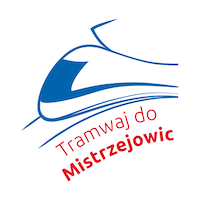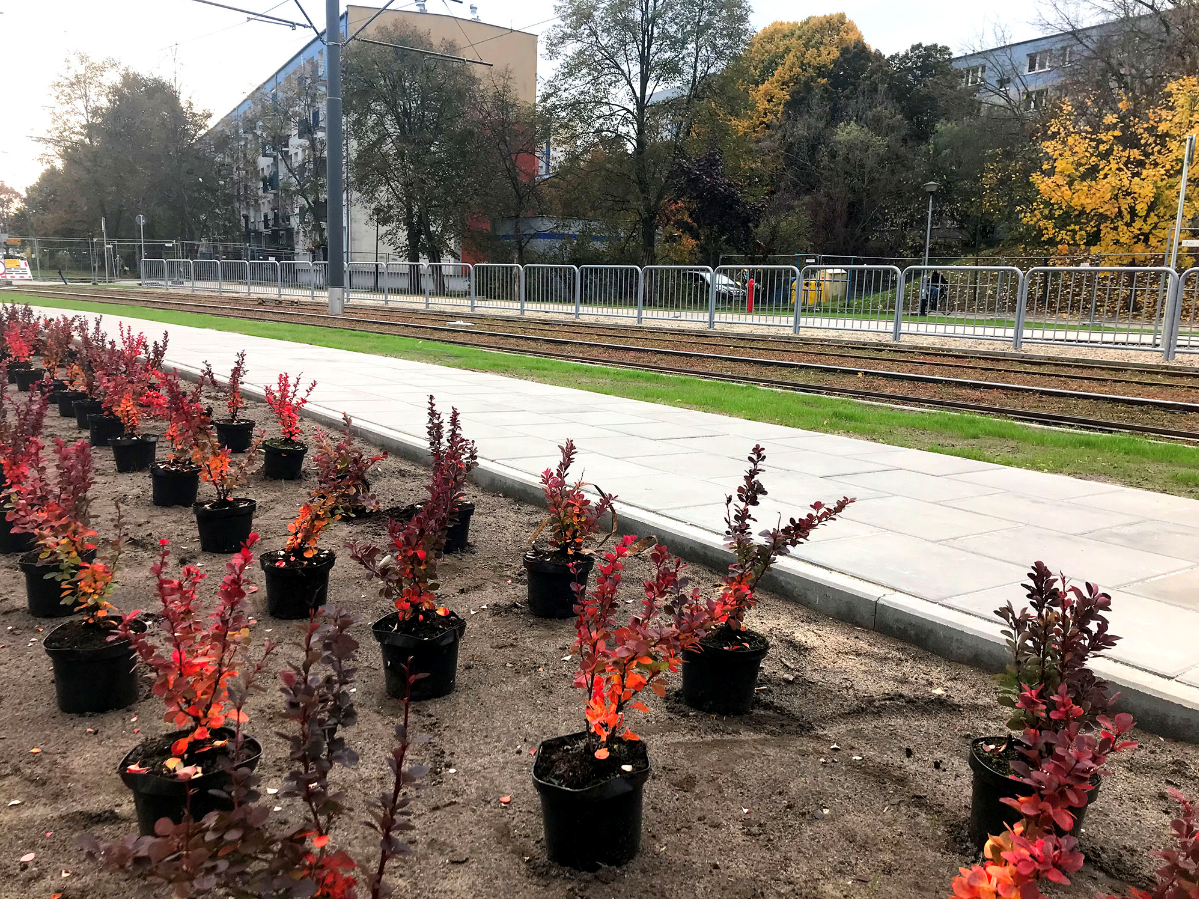1,055 new tress and almost 25,000 shrubs, grasses, perennials and creepers will be planted along the planned tram route to Mistrzejowice. ZZM approved the location and type of compensation plantings.
The private partner has received approved greenery design for the location of compensation plantings. Design works lasting several weeks – involving the relocation of planned and existing systems, adjustments to sidewalks or bicycle paths geometric layout – and a pile of new approvals allowed to locate virtually all new trees and shrubs in the area covered by the investment. This means that lawns along the trackbed and pedestrian and bicycle routes will be planted with trees in the proportion of 1:1. These trees will offer shade to pedestrians, cyclists and public transport users.
Fewer noise barriers, more greenery
A number of changes compared to the initial design assumptions was possible following the change instruction from the public entity at the request of residents (regarding, among others, reduced traffic noise, and thus reduced number of noise barriers). As a result, more space was regained for new plantings along the footways and bicycle routes. However, the current shape of the greenery design was also influenced by the relocated systems, e.g. heating or water and sewage systems – these required re-arrangements. The approval from all municipal units turned out to be necessary. Excellent cooperation at the design stage made it possible to achieve the assumed goal. As a result, the private partner proposed locations for 1,055 new trees and 24,761 seedlings of shrubs, grasses, perennials and creepers.
Urban-resistant species
On hot days, some trees will offer shade for public transport users waiting for a tram or bus. – Almost each stop features trees in a permeable surface with the use of solutions enabling the future growth of the root ball in a separate space under the pavement – says Agnieszka Gurgacz, environmental protection specialist with Gülermak. Similar solutions are designed for trees planted within sidewalks.
Only native species of trees and tall shrubs are chosen for wide vegetated strips, such as broad-leaved linden, rowan, white dogwood and forsythia, and ground cover roses in narrow ones. Those selected are resistant to harsh urban conditions like drought, salinity, high temperature and absorb traffic pollution.
Forested terminus, wildflower meadow, rain garden
Unusual solutions were proposed at the most important points along the tram route. The Mistrzejowice Terminus will be forested with several dozen trees, including birches and linden trees. The composition will also feature carefully selected shrubs and grasses. A wildflower meadow will be set up at the Barei Roundabout. The popular acacia locust growing on the central island of the roundabout will be joined by eight new seedlings of this species. Rain garden will be established in the immediate vicinity. In the current design it has gained additional planting species in order to adapt it to changing weather conditions. At the Młyńskie Roundabout, a delightful composition of maples, roses and varieties of ornamental grasses will be introduced.
ZZM also approved the announced ’green’ trackbed covered with sedum mats wherever technically allowed. The drought-resistant and easy-to-maintain sedum was also designed on the roofs of bus waiting shelters – to put in place the so-called ‘green stops’.


